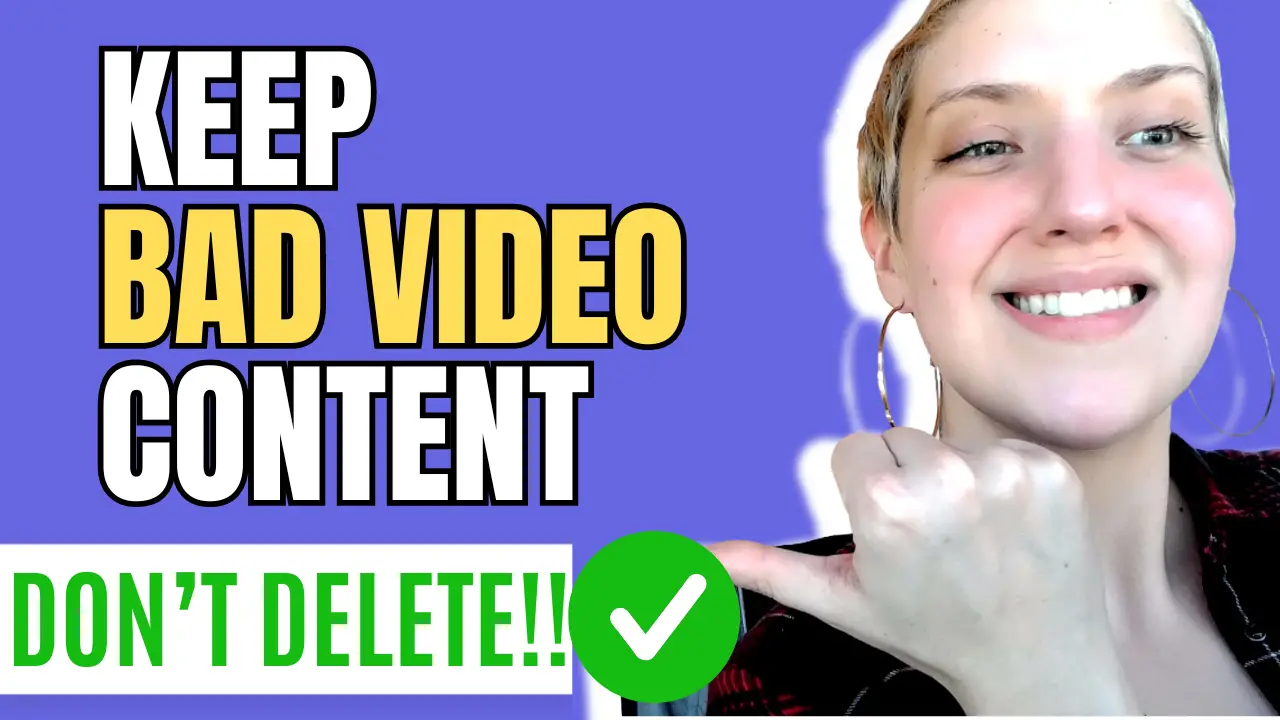If you’ve ever considered deleting a YouTube video because it didn’t quite hit the mark, let’s talk about why hitting that delete button might not be the best move.
Deleting a video can have BIG unintended consequences! Let me explain it in simple terms.
Why You Should Think Twice Before Deleting:
1. Broken Insights and Algorithm Gaps
Whether successful or not, every video provides valuable data about your audience’s preferences. Keeping underperforming videos allows you to analyze their performance and extract insights to inform your future content strategy. Learning from your content is key to continuous improvement.
It’s the main reason YouTube’s Product Lead warns against deleting videos that underperform:
2. Broken Links
When you delete a video, you’re not just removing it from your channel—you’re also cutting off any links or shares associated with it. Imagine someone stumbling upon an old blog post or tweet that links to your video, only to find a dead end. That’s a missed chance to engage with potential viewers and grow your audience.
3. Deletion is Permanent
We’ve all experienced that sinking feeling of regret after deleting something. What if that underperforming video suddenly gained traction? By deleting too soon, you could be robbing yourself of future views and engagement.
What Should You Do Instead?
If you upload a video to YouTube and it gets low views or engagement, what should you do instead of simply deleting it?
First and foremost, let’s do a mindset check – smaller metrics don’t always mean a video was bad, and bad performance might not be attributable to the video content itself.
Try these tips next time you’re disappointed by a video’s performance:
- Optimize Your Video: Update the title, description, and thumbnail. A catchy title and an eye-catching thumbnail can make a world of difference in attracting viewers.
- Promote Your Video: Don’t rely solely on YouTube’s algorithm to drive traffic to your video. Share it across your social media platforms and embed it in related blog posts to boost its visibility.
- Crosslink Via Related Videos: Promote your new video in the descriptions, pinned comments, end screens, and cards of related videos.
- Use Playlists: Playlists are a great way to let users find similar content and let YouTube understand what content is closely related.
- Use Performance Data to Refine your Content Approach: If you notice some topics have longer watch time on average, prioritize long-form content for those topics; do the opposite for content where your audience is dropping off faster than usual.
- Use YouTube’s Native Editor: YouTube’s built-in editor can help you trim content without uploading it all over again. Maybe your intro is too long and isn’t hooking people – use the editor to cut that out! Maybe you have a lot of dead air between chapters – use the editor to reduce it!
These are just a few tips to keep it short and simple. If you’d like to learn more about a specific tip, please leave a comment! Your feedback helps me focus my time on providing what’s really valuable.
If you enjoyed this content, you might enjoy my YouTube Channel! I have created several channels in my time, but this one is where I get to share my favorite marketing tips and tricks. I hope you’ll join me there!

